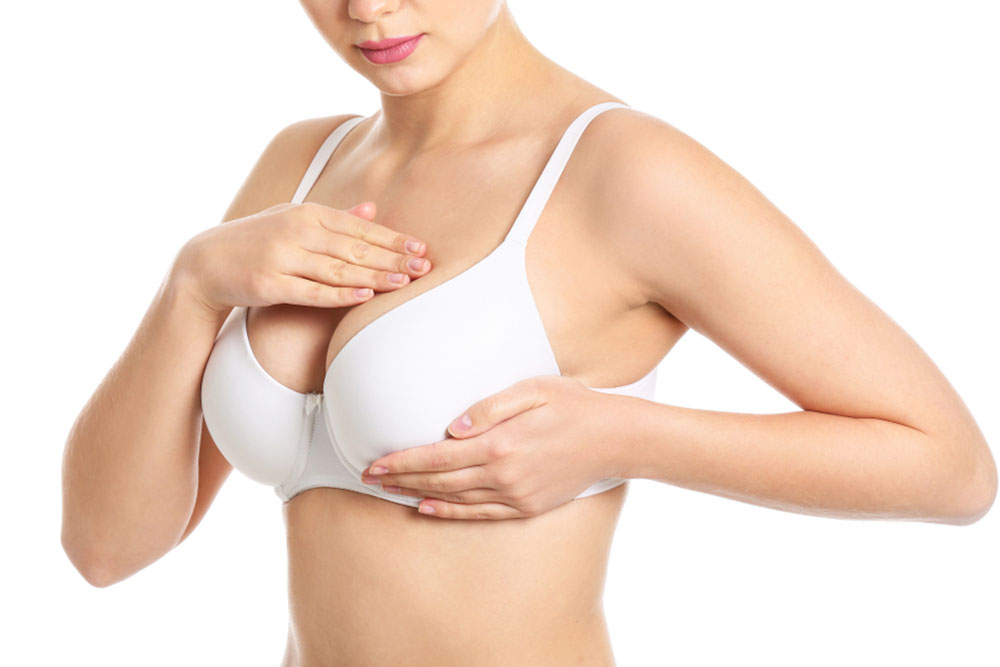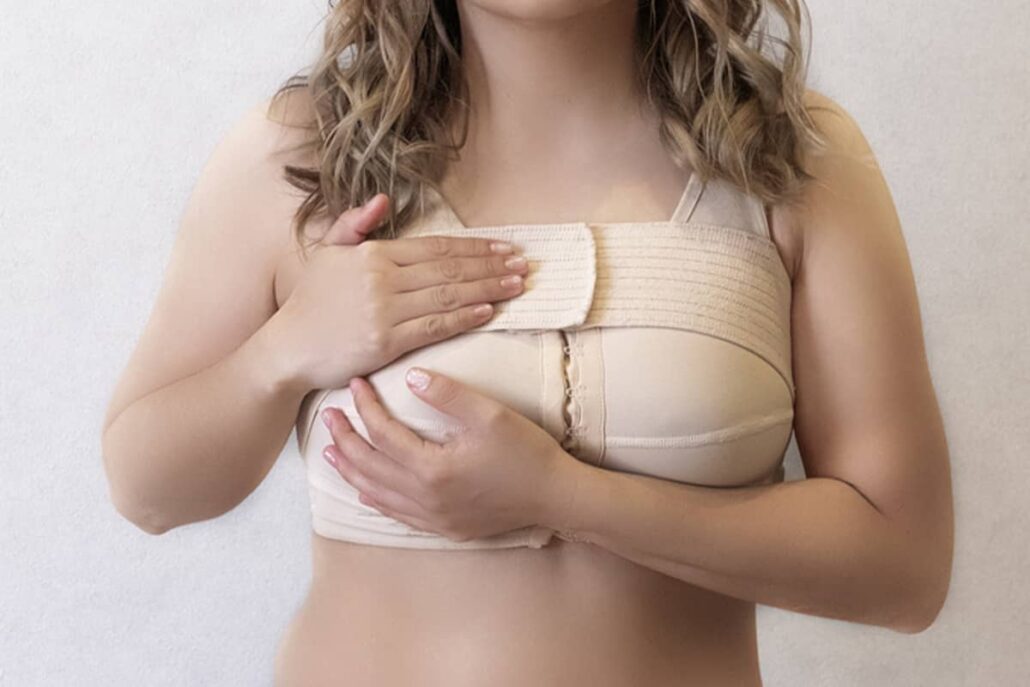
Breast augmentation with fat transfer is a cosmetic procedure that involves the use of liposuction to remove fat cells from other areas of the body and inject them into the breasts for augmentation. This procedure offers a more natural look and feel compared to traditional breast implants, and is suitable for those who desire a slight increase in breast size.
Benefits of Fat Transfer for Breast Augmentation
Breast fat transfer augmentation is a natural method for enhancing breast size and shape, seamlessly integrating the patient’s own fat cells with existing breast tissue. This approach results in fuller, softer breasts, offering a more natural appearance and reducing complications such as capsular contracture or breast implant illness. It is particularly suitable for women looking to restore breast volume lost due to factors like weight loss, aging, or health issues.
Fat transfer breast augmentation improves body contouring by using liposuction to extract excess fat from areas such as the abdomen, thighs, or flanks. This procedure provides dual benefits of breast enhancement and body sculpting, resulting in a balanced figure and enhanced body composition.
The breast fat transfer procedure can also correct uneven breasts. A skilled plastic surgeon can improve symmetry and shape by strategically injecting fat cells, providing a balanced look. This is beneficial for women with naturally lopsided breasts or those whose breast appearance has changed due to pregnancy, breastfeeding, or weight fluctuations.
Who is a Good Candidate for this Procedure?
An ideal candidate for fat transfer breast augmentation is someone who not only has enough excess body fat for transfer but also has a healthy body weight range. This procedure requires a sufficient amount of fat to be harvested, meaning individuals with very little body fat or athletic bodies may not be suitable candidates.
In addition to having enough donor body fat, it’s also important for candidates to have realistic expectations regarding the increase in breast size. Unlike breast implant surgery, which can result in a larger breast size increase, fat transfer cannot achieve a dramatic increase in breast size. However, it can provide a modest increase, along with improved breast shape and symmetry, addressing issues such as uneven breasts or lopsided breasts.
Overall health is another crucial factor to consider. Candidates should be in good health, with no conditions that could complicate the surgical procedure or the healing process. This includes maintaining a healthy lifestyle and diet, as well as ensuring a stable body composition as the body ages. Individuals who smoke or have significant weight fluctuations may not be suitable candidates due to increased risks and potential impact on the success rate of the fat transfer process.
Before and After Pictures
 Explicit content – Discretion advised.
Explicit content – Discretion advised.

*All patients are unique and individual results may vary.
Comparison with Traditional Breast Implants
Understanding the distinction between traditional breast implant surgery and fat transfer breast augmentation is crucial when considering breast enhancement. Traditional implants involve inserting foreign devices, usually silicone gel or saline-filled, into the breast tissue for fuller breasts.
Breast implants can significantly increase breast size, making them a great choice for those wanting larger breasts. However, they carry potential side effects and complications. Capsular contracture, a condition where the immune system reacts to a foreign device, can cause breast hardening and discomfort. There’s also a risk of breast implant illness, a syndrome reported by some patients with implants.
Breast augmentation via fat transfer is a natural method that avoids foreign body reactions and reduces the risk of breast hardening. It doesn’t interfere with mammograms, making it a safer alternative to breast implant surgery. The procedure also enhances body contouring in donor areas like the abdomen or thighs, appealing to those with athletic bodies or those aiming to improve body composition over time.


SPECIALIST CARE YOU CAN TRUST
Dr. Salloum is supported by a brilliant team of caring staff members.
You can trust the entire staff to help make your visit as comfortable and safe as possible!
The Procedure: What to Expect
The fat transfer breast augmentation procedure is executed by an experienced, board-certified plastic surgeon to ensure optimal success.
In the fat transfer process, the first step is fat harvesting. Liposuction removes excess body fat from donor areas like the abdomen or thighs. This crucial part of body contouring provides necessary fat cells for augmentation and improves body composition and contouring effects.
After harvesting, the fat cells undergo purification. This step ensures only the healthiest fat grafting cells are used, separating the fat tissue from other body tissue and foreign bodies. This process enhances the quality of breast fat used in the augmentation, boosting the fat survival rate.
In the final stage of breast fat transfer surgery, purified fat cells are meticulously injected into the breast area. This process, which considers the breast glands and blood vessels for optimal blood circulation, aims to enhance breast size and shape, rectifying any uneven or lopsided breasts.
Recovery and Aftercare
Following the procedure, patients can expect some swelling, bruising, and discomfort. A compression bra is typically worn to support the breasts and minimize swelling. It’s important to avoid pressure on the breasts during the initial recovery period. Patients should contact their doctor if they experience excessive bleeding, swelling, bruising, pain, signs of infection, or other concerning symptoms.
Expected Results and Long-Term Maintenance
Fat transfer breast augmentation results are lifelong, although some fat cells may be reabsorbed by the body. The final result in terms of size, shape, and overall appearance can be appreciated several months after surgery. To maintain the results, it’s crucial to maintain a stable weight, as significant weight fluctuations can affect the volume of the transferred fat. Regular follow-ups with the plastic surgeon are also essential to ensure the best results.
Possible Risks and Complications

Like any surgical procedure, breast augmentation with fat transfer comes with potential risks and complications. These include bleeding, infection, fat cell death or migration, and the formation of noncancerous breast cysts or calcifications. It’s also important to note that achieving a significant size increase may not be possible with this method, and touch-up procedures may be necessary. Therefore, choosing a qualified and experienced surgeon is paramount to minimize these risks and achieve the best results.
Consultation
Breast augmentation fat transfer surgery is a viable option for those seeking a natural look and feel for their breasts. While it may not provide a dramatic increase in size, it does offer improved shape, symmetry, and the added benefit of body contouring.
If you’re considering breast augmentation with fat transfer, scheduling a consultation with a double-board-certified plastic surgeon is the first step. During the consultation, you can discuss your goals, ask questions, and understand the procedure in detail. Contact us at (305) 405 – 6910 to schedule a consultation with Dr. Gabriel Salloum today at the Miami Center for Plastic Surgery.